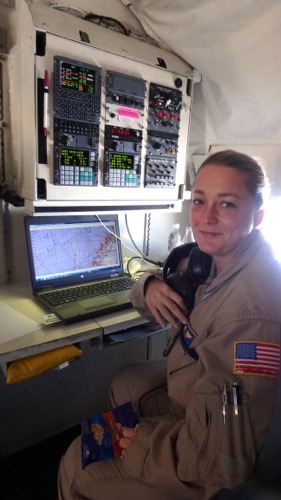Calving of the Larsen Ice Shelf
The Larsen Sea
The Larson Sea is the site of the calving event 15 years ago that broke off the Larsen B ice shelf, sending it towards its demise to the north. This event got a lot of news coverage so you might remember seeing an image of it. Now, the area is a partially refrozen jumble of icebergs and sea ice.
 Image showing the Larsen Ice Shelves (Figure NSIDC)
Image showing the Larsen Ice Shelves (Figure NSIDC)
Along the eastern shore of the north end of the Antarctic Peninsula, Larsen A, B and C were three massive ice shelf pieces, buttressed to the land through pinned point contact with bedrock. As thinning of the ice occurred (at least partially from a warming ocean) the shelves began to crack and separate. Larsen A broke apart in the summer of 1995, and Larsen B in 2002.
 The Larsen B ice shelf made its way away from the ice shelf 15 years ago (image NASA)
The Larsen B ice shelf made its way away from the ice shelf 15 years ago (image NASA)
 Beautiful clear skies and dramatic mountains met our survey team over Larsen C survey site
Beautiful clear skies and dramatic mountains met our survey team over Larsen C survey site
As Larsen B broke free and slowly migrated, it continued to break apart into smaller and smaller bergs. Flying over the site of its former location on the way in to the target area today showed what a jumbled sea ice area it has become. To imagine a huge tabular iceberg here, the size of Rhode Island, breaking off and floating away is pretty sensational. Since that time, other parts of the Larsen shelf have shown signs of rapid deterioration.
 thicker icebergs, broken from the ice shelf, are surrounded by sea ice, salt water frozen in place. They are very different!
thicker icebergs, broken from the ice shelf, are surrounded by sea ice, salt water frozen in place. They are very different!
 Heavily crevassed glaciers at the grounding line along the Larsen ice shelf
Heavily crevassed glaciers at the grounding line along the Larsen ice shelf
Our path today takes us over an evolving rift, where Larsen C is separating from the larger shelf. This rift is of intense interest to scientists on board and is anticipated to be the site of the next large iceberg creation. Larsen C is the size of VT and NH combined, and its disintegration would change the coastline along the Larsen Sea allowing the glaciers behind it to accelerate towards the ocean, bringing about fast change and loss through iceberg creation. Because the ice shelf is already floating (so displacing some of its volume) the concern is less about sea level rise, but more about rate of increase of glacier exposure to warm water.
 The rift along Larsen C, showing where it will break off in the future (Jeremy Harbeck / NASA)
The rift along Larsen C, showing where it will break off in the future (Jeremy Harbeck / NASA)
 Radar image of the Larsen C rift - that's deep!
Radar image of the Larsen C rift - that's deep!
 I'm having too much fun learning about ice, glaciers, melt and instruments!
I'm having too much fun learning about ice, glaciers, melt and instruments!
Our Navigator
Navigation is a really critical part of Operation IceBridge's work. One of our three navigators is Dawn Hokaj. Dawn is a pilot and navigator for NASA. Dawn joined ROTC in high school and the US Air Force after, becoming a pilot. On this mission, she is in charge of plotting the flight path and communicating where to go to the pilots by communicating with mission control.
 Our Navigator, Dawn Hokaj, steering us the right way
Our Navigator, Dawn Hokaj, steering us the right way
 Our flight lines superimposed over bathymetry map, showing topography below the ice
Our flight lines superimposed over bathymetry map, showing topography below the ice
